#Celtes
Explore tagged Tumblr posts
Text

Les lettres séquanes - MBAA Besançon
Prolongation jusqu'au 3 mars 2023
Un peuple celte sous l'Empire romain
#archeology#exposition#musee#besancon#exhibition#sequanes#archeologie#celtes#celtique#peuple celte#besac#franche-comte#sequanie
13 notes
·
View notes
Photo

TRADITION | Toussaint, Samain, nuit d’Halloween et Fête des morts ➽ http://bit.ly/Samhain-Halloween-Toussaint Existant voici plus de 2500 ans et se déroulant tous les 31 octobre, la fête celtique de Samain fut adoptée par les Gaulois, marquant la fin de l’été et le début d’une nouvelle année. Grégoire IV fixant en 837 la Toussaint au 1er novembre, le Samain devint « Halloween »
#Fête#Celtes#Celtique#Gaulois#Samain#Samhain#Toussaint#Halloween#Jour#Morts#Religion#Année#Saisons#Coutumes#Traditions#Rites#31Octobre
16 notes
·
View notes
Text


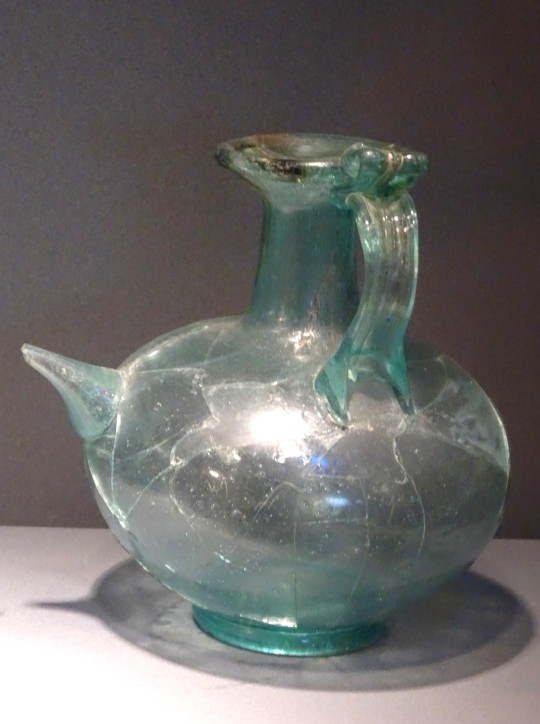
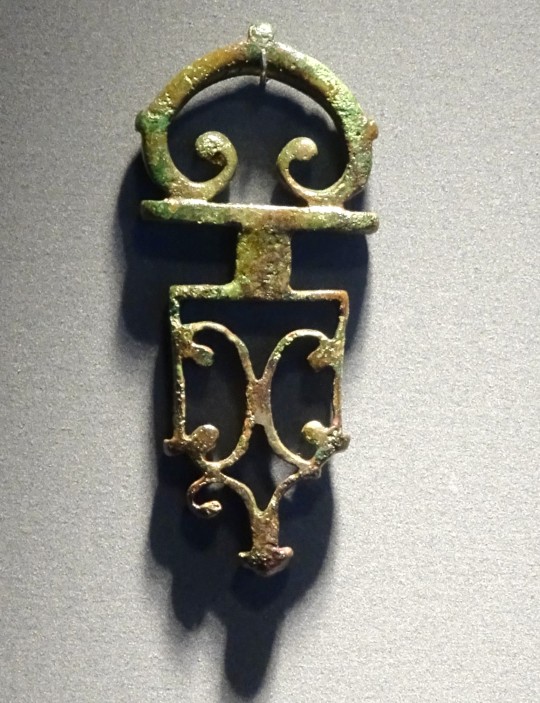
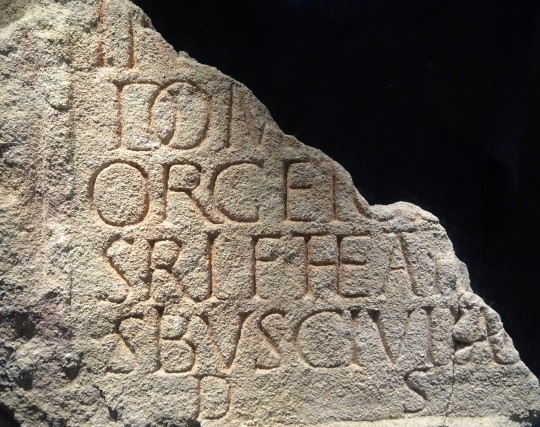
Bon, n'étant pas très mobile, difficile de créer des posts avec de nouvelles photos. Je reviens donc à mon projet de présenter l'intégralité de mes photos, projet interrompu à l'année 2017. Je vais donc essayer de clore cette année 2017.
Ici, les vacances de Toussaint chez ma sœur, en Normandie.
En Mayenne (Pays de la Loire), le site gallo-romain de Jublains.
dodécaèdre en bronze - IIIe s. On ne sait toujours pas le rôle de ces objets !
peinture murale , colombe - vers 50 apr. J-C.
tire-lait ou biberon en verre - IIIe s.
clef en bronze - vers IIe s.
dédicace d'Orgétorix au théâtre - vers 50 ap. J-C.
#souvenirs#pays de la loire#mayenne#jublains#archéologie#gallo-romain#galloromain#dodécaèdre#bronze#fresque#colombe#tire-lait#clef#orgetorix#noviodunum#diablintes#gaulois#celtes
15 notes
·
View notes
Photo
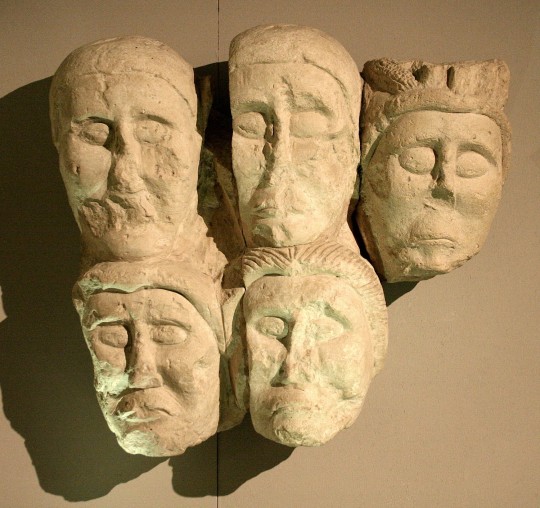
Sites Sacrés et Rituels dans l'Ancienne Religion Celte
Dans la religion des anciens Celtes qui vécurent dans l'Europe de l'âge du fer entre 700 avant notre ère et 400 après notre ère, certains sites naturels comme les sources, les cours d'eau et les bosquets étaient considérés comme sacrés. Ces lieux, ainsi que certains sites urbains, étaient souvent dotés de temples, de sanctuaires et de lieux de culte construits à cet effet. Les druides y accomplissaient des rituels et des prières, tandis que des offrandes de biens précieux et des sacrifices d'animaux et d'êtres humains étaient offerts aux dieux celtes pour gagner leur faveur et assurer la prospérité de la communauté. Les pratiques religieuses et les sites sacrés celtes survécurent initialement à l'expansion de l'Empire romain, mais à partir du 1er siècle de notre ère, ils firentt l'objet d'attaques directes et d'interdictions. Après la propagation du christianisme dans l'Antiquité tardive, la religion celte disparut presque totalement du continent européen.
Lire la suite...
3 notes
·
View notes
Text
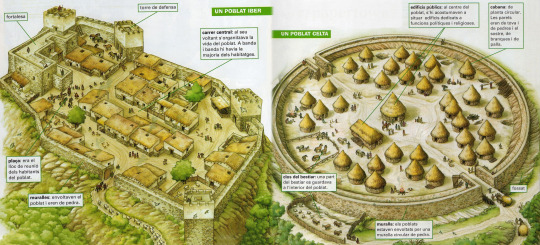
Recreació d'un poblat (iber) i d'un poblat celta (dreta), els dos tipus de pobles antigues típics i propis de Catalunya.
#art#dibuix#història#història antiga#història de Catalunya#ibers#celtes#poblat iber#poblat celta#Edat del ferro
2 notes
·
View notes
Photo
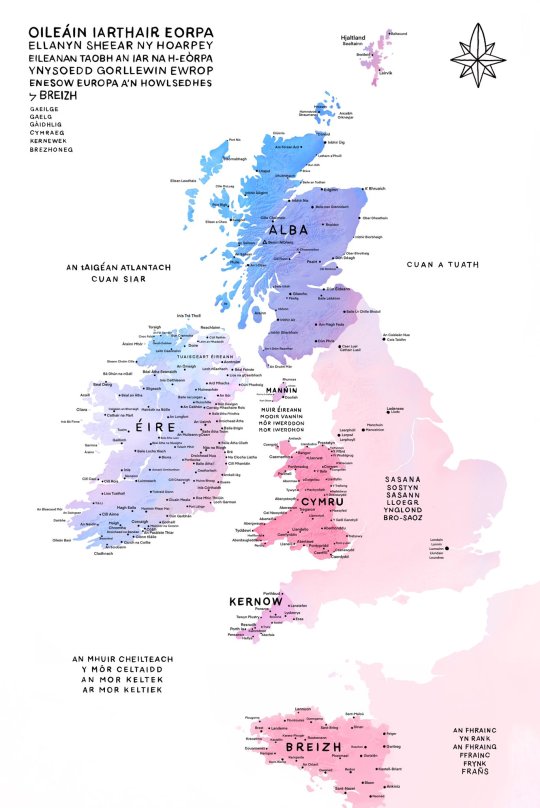
The Celtic Nations with their native place names.
by oglach
10K notes
·
View notes
Video
youtube
Brumath Les 10 Ans Cour du Château et les métiers d'antan
1 note
·
View note
Text
Merlin l'Enchanteur
Merlin l'Enchanteur est un livre de l'historien, poète et philosophe français Edgar Quinet.
0 notes
Text
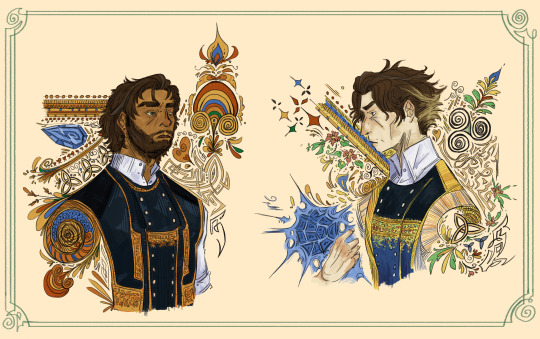
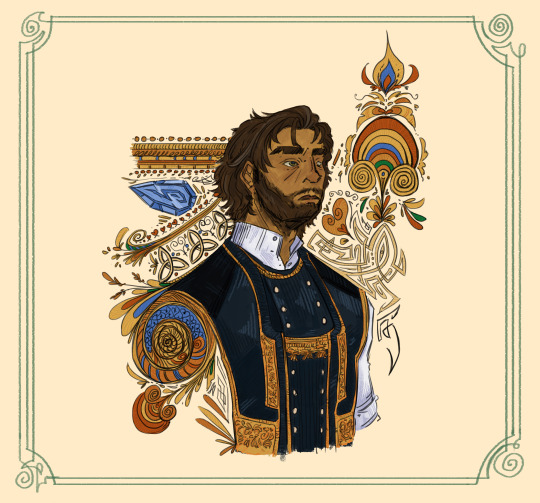

Anyone here for Celtic Jayvik?
(bretagne représente)
#my art#arcane#digital art#jayvik#viktor#viktor arcane#jayce talis#jayce arcane#lol#league of legends#celt#celtic#bretagne#brittany
489 notes
·
View notes
Text

231 notes
·
View notes
Text

Clannad au Festival interceltique de Lorient - 06/08/2023
#celtic music#clannad#irish music#celtic#lorient#festival interceltique#celtes#bretagne#breizh#bzh#brittany#musique traditionnelle#musique celtique#music#folk music#music band#trad music
28 notes
·
View notes
Text



Iron Age Curvilinear Strap Mount, National Museums Scotland, Edinburgh
#iron age#prehistoric#prehistory#archaeology#metalworking#design#Celtic#celts#la tene#curvilinear#mount#fitting#designs#past#ancient cultures#ancient craft#craft
147 notes
·
View notes
Text
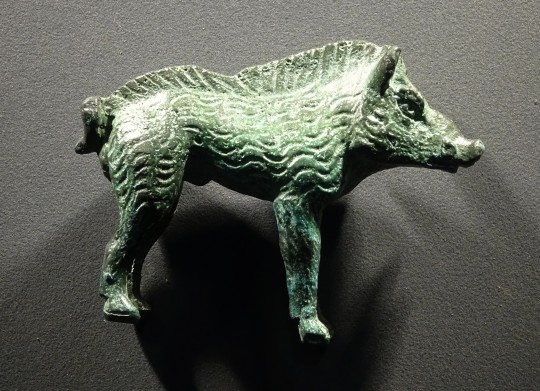
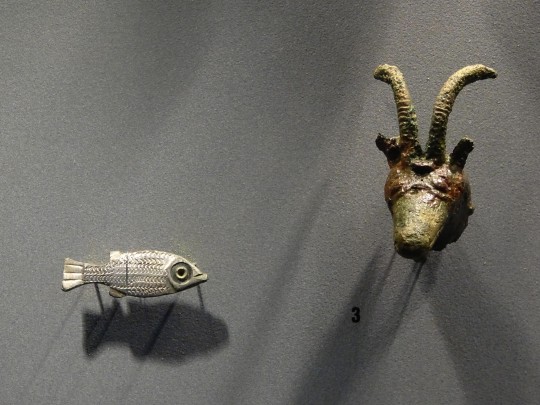
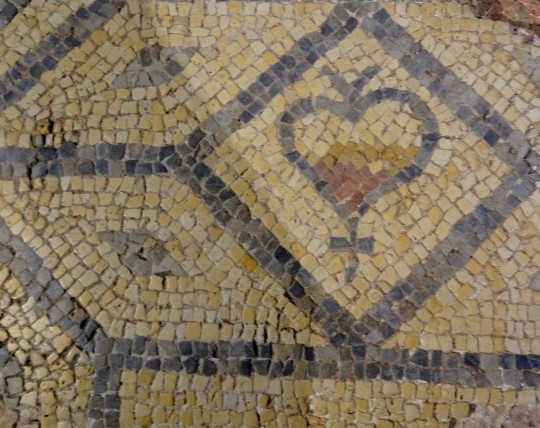

Bon, n'étant pas très mobile, difficile de créer des posts avec de nouvelles photos. Je reviens donc à mon projet de présenter l'intégralité de mes photos, projet interrompu à l'année 2017. Je vais donc essayer de clore cette année 2017.
Ici, les vacances de Toussaint chez ma sœur, en Normandie.
En Mayenne (Pays de la Loire), le site gallo-romain de Jublains.
sanglier en bronze - IIe s.
fibules en bronze - 1er s.
mosaïque
maquette de Noviodunum, cité de la tribu gauloise des Diablintes (d'où dérive le nom de "Jublains")
#souvenirs#pays de la loire#mayenne#jublains#archéologie#gallo-romain#galloromain#sanglier#chèvre#poisson#fibule#mosaïque#noviodunum#diablintes#maquette#gaulois#celtes
7 notes
·
View notes
Text
Arms and Armor of the Hallstatt Celts: A (not-so) Brief Overview
The Hallstatt culture is an archaeologically-defined material culture group. The typesite for this group is in Hallstatt, Austria, where a deep salt mine which had been in use since the Neolithic served as the lifeblood of the local community. A substantial cemetery of approximately 1,300 burials near the mine has helped to clearly define artistic trends associated with this cultural group. The culture is associated with early Celtic or proto-Celtic language speaking groups, and for a long time, was thought to have been the origin of the proto-celtic language. This idea has since been debunked, as it is now known the first proto-Celtic speakers predated the Hallstatt culture.
The Hallstatt culture is divided into four phases, A-D (henceforth abbreviated as Ha. A-D). The first two of these phases are associated with the end of the bronze age in the region, the last two, with the beginning of the iron age.

Since the defining of the culture in 1846, Hallstatt influence has been found from Eastern France to Hungary, as far south as Serbia and as far North as Poland. The core Hallstatt region covers much of Austria and Southern Germany. By the Ha. C period, distinct practices had arisen in the Hallstatt sphere of influence: distinct enough for academics to split the culture into two “zones”, the East and the West.

Unfortunately, due to the antiquity of this culture and the utter lack of any written records concerning them, the archaeological record is both relatively thin, and the only source of information available for these people. As such, in constructing a timeline of Hallstatt arms and armor, there will be substantial gaps which we can only hope will be filled by future discoveries.
Armor
Three types of armor are commonly found in Hallstatt contexts: belts, cuirasses, and helmets.
That broad belts (both of leather and of bronze) are considered armor in the ancient Mediterranean is clear from references in which these items are placed in context with other armor. In the Iliad, for example, in book 7 after Ajax and Hector meet on the field of battle and fight to a stalemate, they exchange equipment. Hector “gave over his silver-studded sword, bringing with it the sheath and well-cut baldric” (l. 303-304), while Ajax reciprocated with “his war-belt bright with crimson” (l. 305). Additionally, a short list of military equipment issued by the Neo-Assyrian empire recovered in Tel Halaf lists 10 leather belts alongside bows, swords, spears, and other arms and armor.
A number of bronze and gold belt plates survive from both the Eastern and Western zones, though most of these plates date to the Ha. D period.
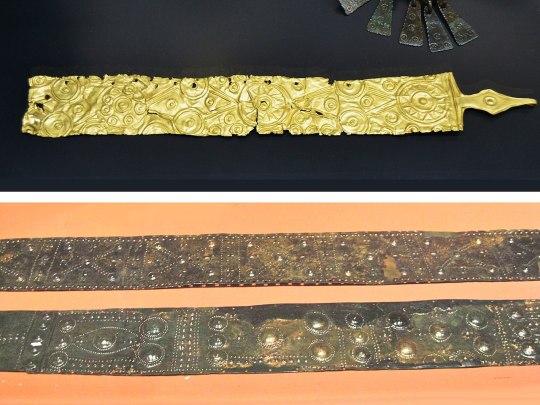
While the majority of these plates are decorated with embossed and incised geometric patterns, some (particularly from the Eastern zone) include scenes of warriors on foot and on horseback.
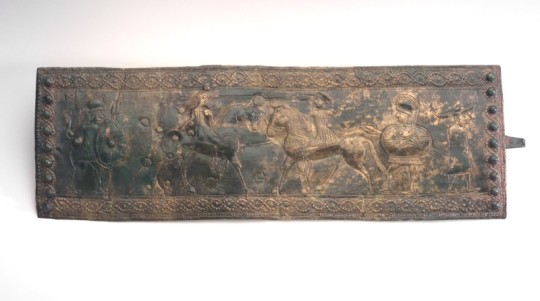
The cuirasses of the Hallstatt period exhibit an interesting progression. In their most basic form, these bronze cuirasses remain essentially the same from Ha. A-D. They are characterized by essentially simple forms: a tubular breast and backplate which terminates at the waist and includes a tall standing collar to defend the neck. The earliest examples, however, include substantial embossed decoration in much the same manner as appears on the belt plates.
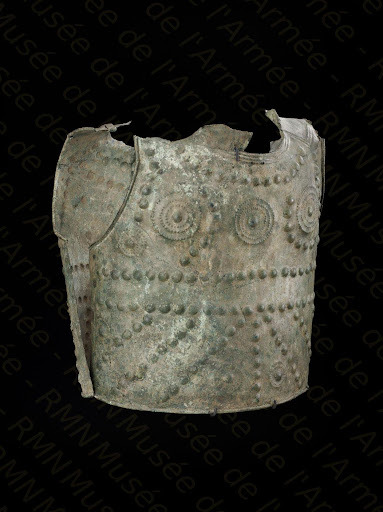
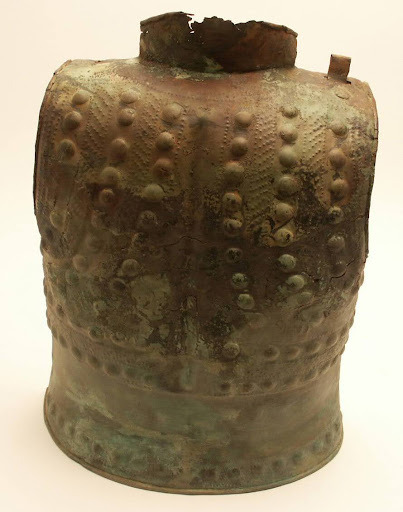
Only in the late Ha. B to early Ha. C period does this decoration begin to take on a more anatomical form; a group of seven cuirasses recovered in Marmesse, France in 1974 shows this evolution nicely. These cuirasses retain the same form, though a slight taper is now evident near the waist. The circular embossing closely resembles that of the previous period, however embossed lines are now apparent, and the placement of the embossing is such as to evoke the musculature of the warrior wearing it.
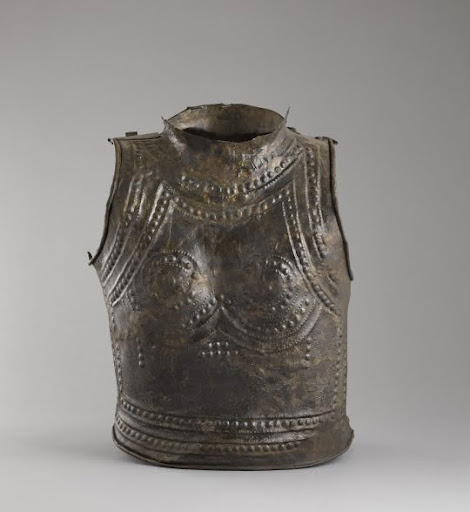

The final stage of the cuirasse’s evolution arrives in Ha. D. This form is much more plain, lacking the apparent horror vacui which typified earlier iterations of this style. Instead, the anatomical element is even more pronounced: embossing emphasizes the warrior’s pectoral and abdominal muscles, and additional circular bronze plates are riveted to the upper chest to simulate nipples.
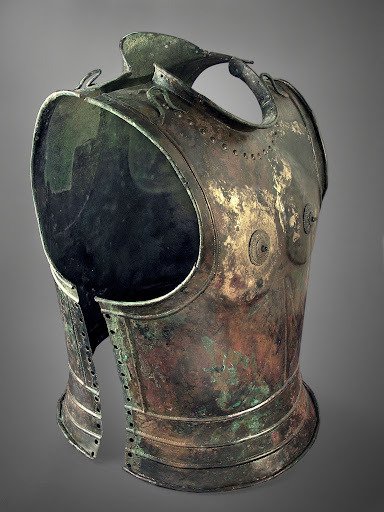
The final element of armor with substantial enough evidence in a Hallstatt context to be addressed is the helmet. Unfortunately, surviving helmets are extremely scarce, and there is no pictorial evidence to consult prior to the Ha. D period.
Four helmet types appear both archaeologically and artistically in Hallstatt contexts. We will call these the crested, the plated, the double-crested, and the Negau.
Only one artistic example of the crested helmet is to be found, and no archaeological examples. It is to be found on a grave good in the shape of a wagon adorned with many figures made ca. 600 BC and recovered in Strettweg, Austria.
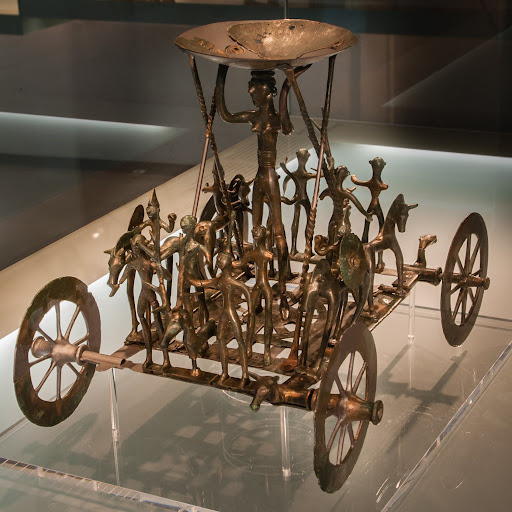
A find from Normandy (outside the Hallstatt sphere of influence) dated ca. 1200-700 BC shows what this type of helmet may have looked like.

The plated type is nearly as obscure, represented by only a single survival and a single artwork. The helmet, recovered in Šentvid, Slovenia and dated ca. 800-450 BC, is curious for the distinct pearly texture of its surface.
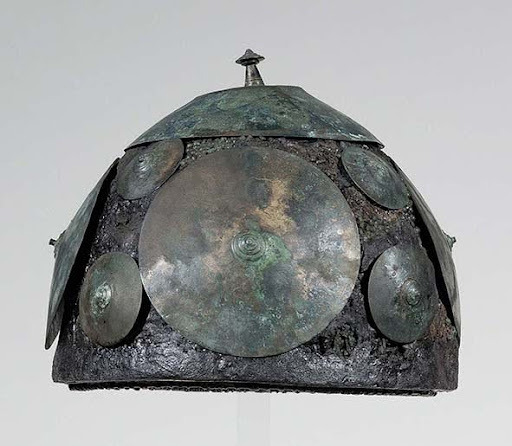
A number of similar helmets appear on a situla recovered from the Certosa Necropolis in modern Bologna, Italy. This situla is dated ca. 600 BC, and bears a striking resemblance to other situlae found in Hallstatt contexts.
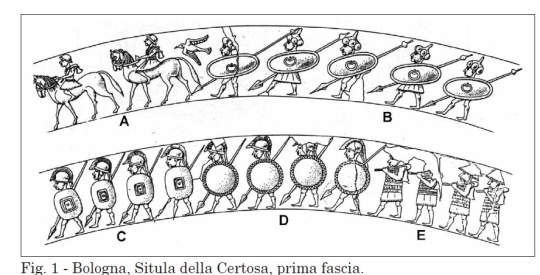
The most well attested form of Hallstatt helmet is the double-crested type. This type appears with the onset of Ha. D, and sees use until the end of the Hallstatt period. It is attested to by several survivals


and numerous depictions on a number of situlae

and belt plates.

This type is so-called for the twin crests that adorn the helmet’s skull; crests which, as is attested by the pictorial evidence, served as anchors to large plumes likely made from horse hair.
The final type is named for a town in Slovenia where a large cache of helmets of this type was found in 1812. The Negau type appears at the very tail end of Ha. D, and primarily in Etruscan and Italic contexts. However a number of finds (including the eponymous horde) come from regions of Hallstatt (and eventually La Téne) influence.

Weapons
The weapons which can be found in Hallstatt contexts are very much the same as those found elsewhere in Europe, consisting primarily on spears, axes, swords, and daggers. The spears and axes of the period are very similar to those found elsewhere in Europe and across the Mediterranean in the late bronze to early iron age, and as such will not be discussed further.


Indeed, even the swords of the Hallstatt bronze age (Ha. A-B) bear no significant differences from other swords found in Central and Western Europe at the time.

It is not until Ha. C, and the advent of the iron age, when two new types unique to the culture emerge. Though similar, these sword types, called Gündlingen

and Mindelheim, are distinguished by a number of factors.

First and foremost is size, with Mindelheim swords averaging around 85 cm or 33.5 in in length, while the Gündlingen type only averages 70-75 cm (27.5-29.5 in). Another striking feature of the Mindelheim type which is almost non-existent on Gündlingen swords is a pair of deep grooves on either side of the blade. Additionally, Gündlingen swords are only ever found in bronze, while Mindelheim can be found in either bronze or iron. Gündlingen swords seem to have been tremendously greater in popularity, with only 27 examples of the Mindelheim type being known to over 240 of the Gündlingen. There is also a geographical element: the majority of Mindelheim swords have been found in the east from Austria to Germany, Poland, and as far north as Sweden. Gündlingen swords, by contrast, have mostly been found in the west, as far as Britain and Ireland. Neither type, however, can be found in the core Hallstatt Regions after the advent of Ha. D, when daggers become the primary funerary good of the elite.
Daggers, of course, were not unknown in Hallstatt regions prior to 620 BC. A number of survivals from Ha. A-B attest to the fact that single-edged daggers were popular.


With the advent of the iron age and the rise in popularity of the peculiar Hallstatt sword types, daggers become more rare, until once again they spring back to the fore in Ha. D. At this time, a particular dagger type is almost ubiquitous. This dagger has long, straight quillons mirrored by a tubular pommel. The grip is thin, and the blade is broad and double-edged. This same basic form is present, both plain and with various embellishments, until the end of the Hallstatt period.


#arms and armor#weapons#armor#ancient history#hallstatt culture#celts#iron age#art#history#ancient celts#sword#axe#dagger#spear
155 notes
·
View notes
Text

Mapa dels cercles de pedra i henges de les illes Britàniques (c. 3500 aC a 100 aC).
#mapa#cartografia#megalitisme#megàlits#cercle de pedra#henge#illes Britàniques#història#arqueologia#història antiga#Edat del Bronze#Edat del Ferro#celtes#cèltic
2 notes
·
View notes